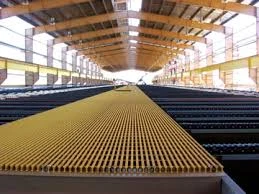
-
 Afrikaans
Afrikaans -
 Albanian
Albanian -
 Amharic
Amharic -
 Arabic
Arabic -
 Armenian
Armenian -
 Azerbaijani
Azerbaijani -
 Basque
Basque -
 Belarusian
Belarusian -
 Bengali
Bengali -
 Bosnian
Bosnian -
 Bulgarian
Bulgarian -
 Catalan
Catalan -
 Cebuano
Cebuano -
 China
China -
 China (Taiwan)
China (Taiwan) -
 Corsican
Corsican -
 Croatian
Croatian -
 Czech
Czech -
 Danish
Danish -
 Dutch
Dutch -
 English
English -
 Esperanto
Esperanto -
 Estonian
Estonian -
 Finnish
Finnish -
 French
French -
 Frisian
Frisian -
 Galician
Galician -
 Georgian
Georgian -
 German
German -
 Greek
Greek -
 Gujarati
Gujarati -
 Haitian Creole
Haitian Creole -
 hausa
hausa -
 hawaiian
hawaiian -
 Hebrew
Hebrew -
 Hindi
Hindi -
 Miao
Miao -
 Hungarian
Hungarian -
 Icelandic
Icelandic -
 igbo
igbo -
 Indonesian
Indonesian -
 irish
irish -
 Italian
Italian -
 Japanese
Japanese -
 Javanese
Javanese -
 Kannada
Kannada -
 kazakh
kazakh -
 Khmer
Khmer -
 Rwandese
Rwandese -
 Korean
Korean -
 Kurdish
Kurdish -
 Kyrgyz
Kyrgyz -
 Lao
Lao -
 Latin
Latin -
 Latvian
Latvian -
 Lithuanian
Lithuanian -
 Luxembourgish
Luxembourgish -
 Macedonian
Macedonian -
 Malgashi
Malgashi -
 Malay
Malay -
 Malayalam
Malayalam -
 Maltese
Maltese -
 Maori
Maori -
 Marathi
Marathi -
 Mongolian
Mongolian -
 Myanmar
Myanmar -
 Nepali
Nepali -
 Norwegian
Norwegian -
 Norwegian
Norwegian -
 Occitan
Occitan -
 Pashto
Pashto -
 Persian
Persian -
 Polish
Polish -
 Portuguese
Portuguese -
 Punjabi
Punjabi -
 Romanian
Romanian -
 Russian
Russian -
 Samoan
Samoan -
 Scottish Gaelic
Scottish Gaelic -
 Serbian
Serbian -
 Sesotho
Sesotho -
 Shona
Shona -
 Sindhi
Sindhi -
 Sinhala
Sinhala -
 Slovak
Slovak -
 Slovenian
Slovenian -
 Somali
Somali -
 Spanish
Spanish -
 Sundanese
Sundanese -
 Swahili
Swahili -
 Swedish
Swedish -
 Tagalog
Tagalog -
 Tajik
Tajik -
 Tamil
Tamil -
 Tatar
Tatar -
 Telugu
Telugu -
 Thai
Thai -
 Turkish
Turkish -
 Turkmen
Turkmen -
 Ukrainian
Ukrainian -
 Urdu
Urdu -
 Uighur
Uighur -
 Uzbek
Uzbek -
 Vietnamese
Vietnamese -
 Welsh
Welsh -
 Bantu
Bantu -
 Yiddish
Yiddish -
 Yoruba
Yoruba -
 Zulu
Zulu
frp housing
Exploring FRP Housing A Revolutionary Approach to Sustainable Living
In an era where sustainability and eco-friendliness are at the forefront of architectural innovation, Fiber Reinforced Polymer (FRP) housing has emerged as a groundbreaking solution that combines durability, versatility, and environmental consciousness. This article seeks to explore the advantages, applications, and future potential of FRP in the construction of housing.
Understanding FRP
Fiber Reinforced Polymer consists of a polymer matrix reinforced with fibers, which can include materials like glass, carbon, or aramid. This composite material displays a remarkable strength-to-weight ratio, making it structurally robust while being lightweight. These characteristics make FRP an appealing choice for construction, particularly in housing, where both durability and efficiency are paramount.
Advantages of FRP Housing
1. Durability and Longevity One of the most significant advantages of FRP housing is its exceptional durability. FRP materials are resistant to corrosion, moisture, and chemical attacks, which contributes to the longevity of structures made from it. Unlike traditional materials like wood or steel, which may deteriorate over time, FRP remains stable, requiring minimal maintenance.
2. Sustainability In the quest for sustainable living, FRP housing presents a viable option. The production of FRP can be less environmentally damaging compared to conventional materials. Additionally, the lightweight nature of FRP allows for reduced energy consumption in transportation and construction, leading to a smaller carbon footprint.
3. Design Flexibility FRP’s versatility in design cannot be overstated. Architects and builders can create intricate, bespoke designs that would be challenging with traditional materials. The ability to mold FRP into various shapes opens up endless possibilities for creative and functional housing solutions, enabling the construction of unique structures that cater to individual needs.
4. Energy Efficiency FRP materials can provide excellent insulation properties, contributing to energy efficiency in housing. By maintaining a stable indoor temperature, FRP houses can reduce the reliance on heating and cooling systems, leading to lower energy bills and a reduced environmental impact.
frp housing

Applications of FRP Housing
The applications of FRP in housing are abundant. From affordable housing solutions to innovative eco-friendly communities, FRP can revolutionize the way we approach residential construction. For instance, in disaster-prone areas, FRP housing can serve as a resilient alternative to traditional structures. Its lightweight and robust nature allows for quicker assembly and disassembly, making it ideal for temporary housing or emergency shelters.
Moreover, FRP can be integrated into modern prefabricated housing solutions, where components are manufactured off-site and assembled on location. This not only streamlines the construction process but also reduces waste and minimizes the environmental impact.
Challenges and Future Potential
Despite its numerous advantages, the adoption of FRP housing is not without challenges. The initial cost of FRP materials can be higher than that of conventional building materials, which may deter some developers and homeowners. However, as production methods improve and technology advances, the costs associated with FRP are expected to decrease, making it more accessible.
Furthermore, there is a need for broader acceptance and understanding of FRP housing among consumers and builders. Education and awareness campaigns could help mitigate skepticism, emphasizing the long-term benefits of investing in FRP residential structures.
Conclusion
The future of housing may very well lie in the embrace of innovative materials like Fiber Reinforced Polymer. With its remarkable durability, sustainability, design flexibility, and energy efficiency, FRP housing presents a compelling alternative to traditional construction methods. As the global community increasingly prioritizes sustainable living, the integration of FRP technologies in residential construction will likely play a crucial role in shaping eco-friendly, resilient, and beautiful homes for generations to come. Embracing this material not only aligns with the principles of sustainable development but also paves the way for a reinvigorated and adaptive approach to modern housing. The journey toward greener living is well underway, and FRP housing is at the forefront of this transformative movement.









